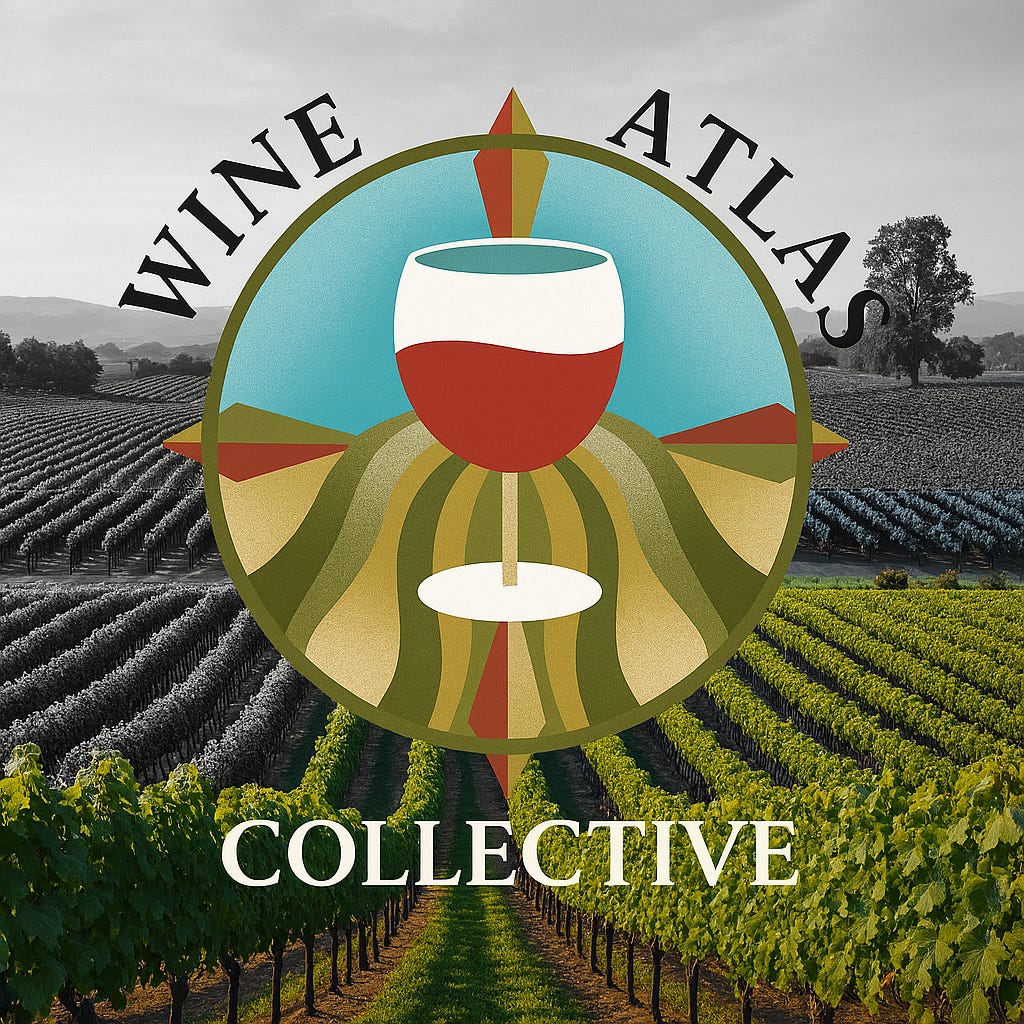This Is How You Collectively Address the Current Wine Industry Conditions
A New Idea that will work.
How does collaboration between industry actors happen? In a variety of ways, from the political to the promotional. But the one I’m thinking about today is something that feels new, yet feels obvious.
I’m thinking about the newly minted Wine Atlas Collective. It is made of the following wineries located in distinct locations across the country:
Blenheim Vineyards, Charlottesville, VA
Brooks, Willamette Valley, OR
Frog’s Leap, Rutherford, Napa Valley, CA
L’Ecole № 41, Walla Walla Valley & Woodinville, WA
Red Tail Ridge, Finger Lakes, NY
Ridge Vineyards, Sonoma and Santa Cruz, CA
Tablas Creek, Paso Robles, CA
William Chris Vineyards, Texas Hill Country, TX
The idea is simple. If you are a member of the wine club at Brooks Winery in the Willamette Valley, then you automatically receive wine club benefits at L’Ecole #41 in Washington. Members of one of the Collective’s clubs are not obligated to take regular wine shipments from other members of the Collective. Rather, it’s the perks that come with membership that are extended at other collective wineries. So, discounts on tastings, priority reservations, discounts on wine purchases, and the like.
Why these wineries? All of them place extraordinary emphasis on sustainable viticulture and winemaking. The other key is that none of these wineries compete with each other geographically. That is, there is just one Napa Valley, one Finger Lakes, one Willamette Valley, one Texas winery, etc in the Collective. This is an important element of the Collective effort. Sales cannibalization is not happening here, whereas it surely would were all the wineries in a single region.
The idea is to collectively promote the other wineries, to provide customers with more incentive to join the individual winery clubs, to promote the idea of sustainability, and generate other opportunities for collective marketing, sales, and promotion.
It’s very hard to argue with this Collective format, particularly today, as nearly all wineries are fighting against significant headwinds. It is marginal marketing efforts like the Wine Atlas Collective that are likely to produce the kind of incremental increases in visibility and sales that wineries (and all tiers of the industry) are going to have to consider as they push back against the obstacles facing them.
Big ideas are unlikely to emerge to help wineries face what they are facing. Technology will continue to develop, yes. Perhaps political and litigation efforts will open more doors. But big, new ideas are not what will help wineries today. It really is a moment that emphasizes innovation and head-down, forward movement. This is why I like the Wine Atlas Collective and the innovative thinking it represents.
For the record, the idea was conceived by Janie Brooks Heuck, Managing Director at Brooks Winery in the Willamette Valley. When I spoke with Janie, she emphasized that the Collective is in no hurry to expand its membership. They are not looking to add new wineries from every AVA. Instead, she and the rest of the Collective’s owners are in “proof-of-concept” mode. That’s smart, too. Rapid expansion of new platforms is often emphasized over proving the platform’s viability or usefulness. There is currently no decisive requirement that the Collective sell X amount of wines or sign up a large number of subscribers. They merely need to demonstrate that the idea can work.
Brooks-Heuck emphasized that down the road, the Collective will certainly look at new members. But when they do, they will be looking to keep geographic diversity a priority, along with a commitment to sustainability by any new members.
What really looks interesting to me is the opportunity for the Wine Atlas Collective members to engage together in consumer events at the locations where current members reside. Also, the opportunity for beneficial and mutual communication to all the Collective’s club members is a promising avenue. And down the road, occasional offers to buy can also be another option.
You can’t swing a drained wine bottle these days without coming across hand ringing, demoralizing thoughts on the state of the industry, and predictions of the demise of whole swaths of the wine industry. The Wine Atlas Collective gives me hope and represents innovation and head-down forward movement in a time of too much despondency.



I think direct winery sales would bloom if they offered free shipping. Don't know the exact math but has to be less that the approx. 30% they lose to distributor sales. After all, this difference is what pays for those fancy tasting rooms. KLWM (not a winery) does this, and I never hesitate to order from them because I never have to worry that the shipping charges many not justify the expense.
thanks for sharing your thoughts! it’s so important for the future of wine making/consumption